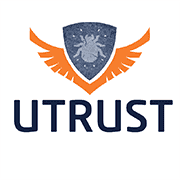Acceptance Testing
Acceptance testing is a type of software testing that is performed to determine whether a software system meets the requirements and specifications laid out by the stakeholders. It is usually the final stage of software testing and is conducted to ensure that the software system is ready for deployment.
The purpose of acceptance testing is to ensure that the software system meets the user’s needs and requirements and is free from defects. Acceptance testing is usually performed by the end-users or the stakeholders who have a vested interest in the software system.
Acceptance testing can be performed using different techniques, such as functional testing, usability testing, performance testing, and security testing. The choice of technique depends on the type of software system being tested and the requirements of the stakeholders.
The results of acceptance testing are used to determine whether the software system is ready for deployment. If the system fails the acceptance tests, it is sent back to development for further testing and bug fixing. Once the system passes the acceptance tests, it is considered ready for deployment, and the stakeholders can begin using it in their business operations.
UTrust can help our clients by providing comprehensive acceptance testing services that ensure their software applications meet the expected functional and non-functional requirements and user expectations. Here are some specific ways we can assist our clients with acceptance testing:
- Test Planning and Strategy: UTrust can work with our clients to develop an acceptance test plan and strategy that aligns with their business goals and objectives. Our acceptance test planning and strategy services can help our clients identify acceptance testing requirements, prioritize testing activities, and develop test cases and scenarios that cover all aspects of their software applications.
- Test Execution: UTrust can execute acceptance tests on our clients’ software applications, using manual and automated testing methods. Our test execution services can help our clients identify any issues or deviations from the expected requirements or user expectations, while ensuring that their software applications meet the acceptance criteria.
- User Acceptance Testing: UTrust can perform user acceptance testing (UAT) on our clients’ software applications, ensuring that they meet the expected functional and non-functional requirements and user expectations. Our UAT services can help our clients enhance user satisfaction, while ensuring that their software applications are fit for purpose and meet their business needs.
- Non-Functional Testing: UTrust can perform non-functional tests on our clients’ software applications, including performance, security, and usability testing. Our non-functional testing services can help our clients ensure that their software applications meet the expected non-functional requirements, such as response time, security, and user experience.
- Defect Management: UTrust can manage the defects identified during acceptance testing, ensuring that they are tracked, prioritized, and resolved in a timely manner. Our defect management services can help our clients improve the quality and reliability of their software applications, while reducing the risks and costs associated with software defects and errors.
Overall, UTrust‘s acceptance testing services can help our clients ensure that their software applications meet the expected requirements and user expectations, while reducing the risks and costs associated with software defects and errors.

